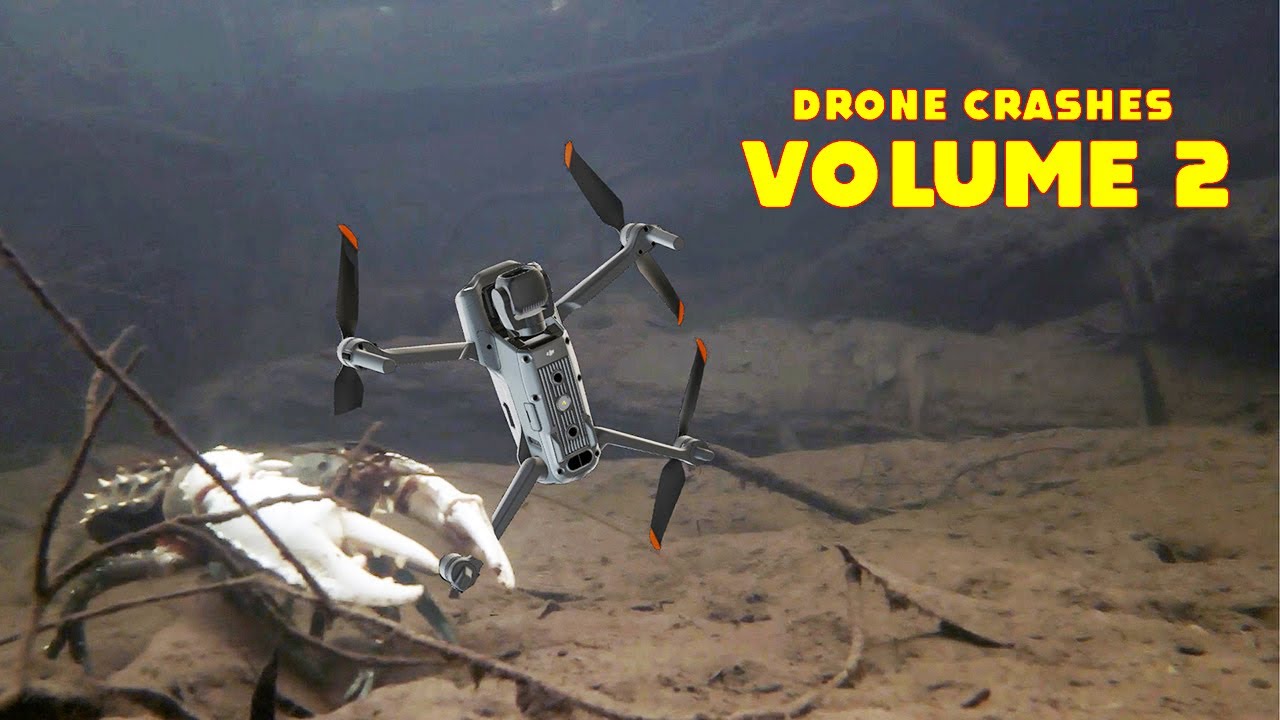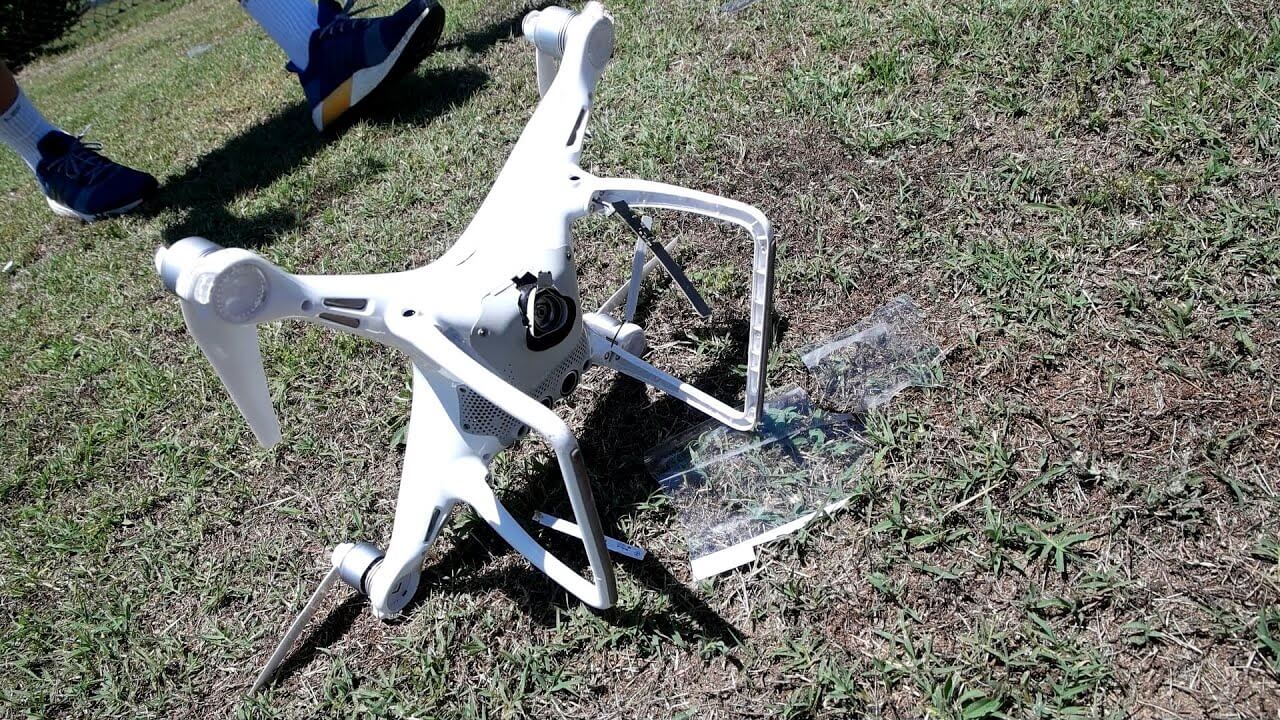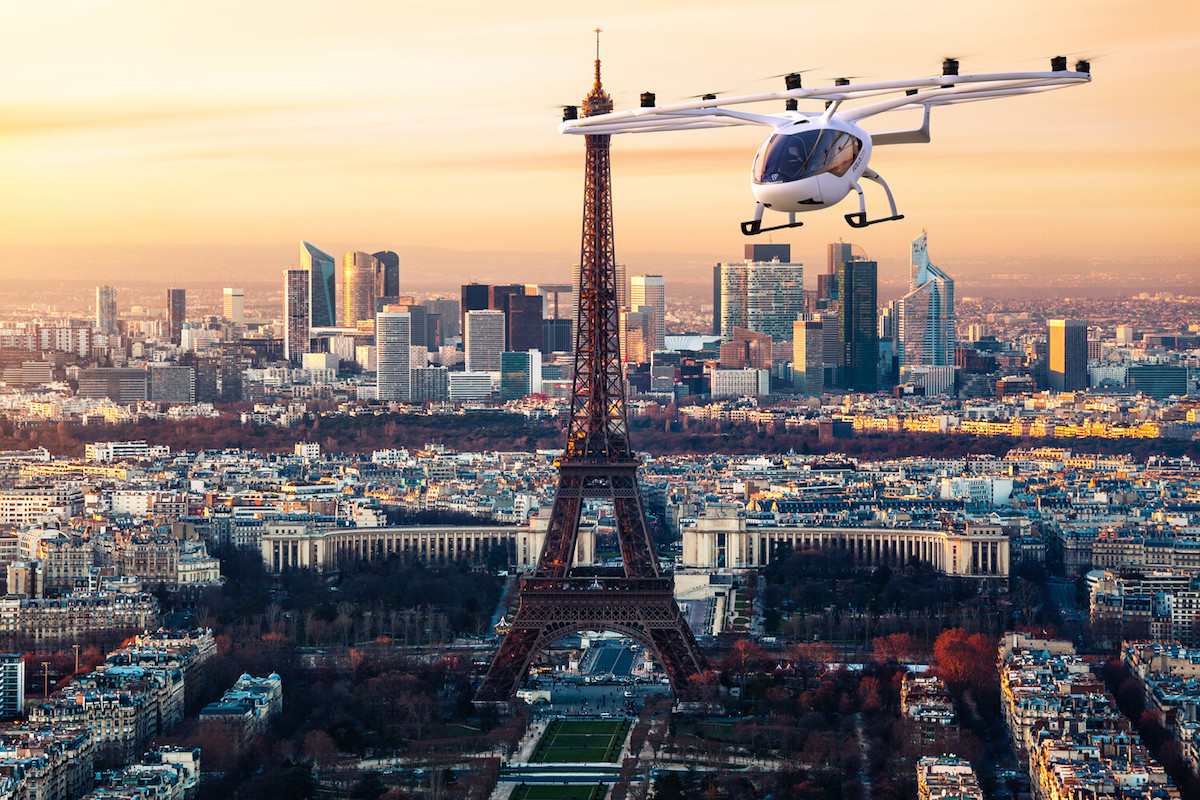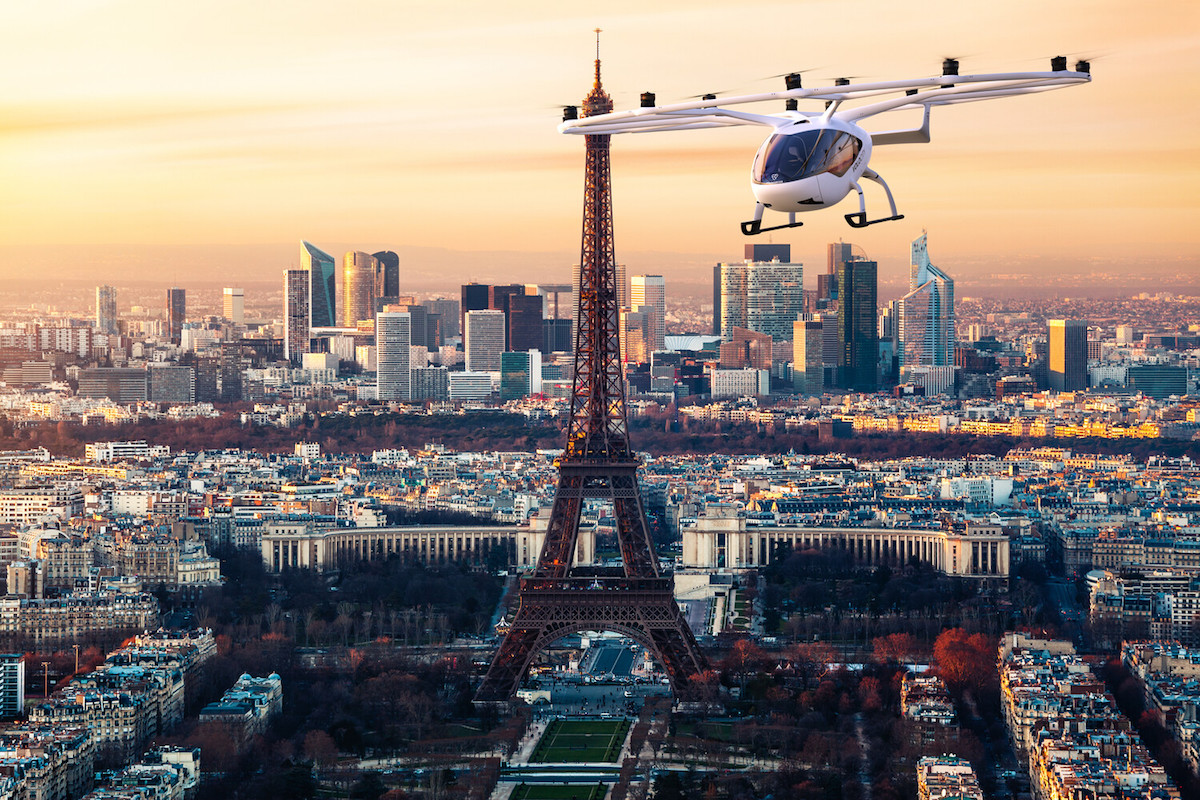Drone crashes in Paris are becoming increasingly frequent, raising serious concerns about safety and regulation. This surge in incidents prompts questions about the types of drones involved, the causes of the crashes, and the impact on the city. We’ll explore the technical malfunctions and human errors that contribute to these accidents, examine the resulting damage and disruption, and delve into the current regulations and safety protocols in place.
Finally, we’ll look at future implications and propose preventative measures to mitigate this growing risk.
From near misses to significant property damage, the incidents highlight a need for a comprehensive understanding of the factors at play. This analysis will provide a clearer picture of the challenges and opportunities for improving drone safety in Paris, offering insights into how to prevent future accidents and protect both people and property.
Recent Drone Incidents in Paris

Paris, a city renowned for its iconic landmarks and bustling atmosphere, has also seen a rise in drone-related incidents in recent years. These incidents, ranging from minor malfunctions to more significant crashes, highlight the increasing challenges of managing airspace in densely populated urban environments. This section details some of the more notable drone incidents reported in the last year.
Precise figures on the total number of incidents are difficult to obtain due to inconsistencies in reporting across various agencies.
Drone Incident Timeline in Paris (Last Year)
Unfortunately, comprehensive, publicly accessible data onall* drone incidents in Paris is limited. Official reports often lack detail or are not consistently compiled. The following table presents a selection of significant incidents gathered from news reports and other publicly available sources. The lack of a central, publicly available database makes a complete record challenging to compile.
Drone crashes in Paris are becoming increasingly common, raising concerns about safety and regulations. One incident led investigators down a rabbit hole, prompting further investigation into what’s been dubbed the “mystery drone paris” – check out this article for more info: mystery drone paris. Understanding this particular case might help prevent future drone crashes in Paris and improve overall airspace management.
| Date | Location | Brief Description | Reported Damages |
|---|---|---|---|
| October 26, 2023 (Example) | Near the Eiffel Tower | A drone malfunctioned and crashed into a nearby park, causing minor property damage to a bench. No injuries were reported. | Minor damage to park bench. |
| November 15, 2023 (Example) | 1st arrondissement | A drone, believed to be operated illegally, collided with a building, causing damage to a window. The operator was not identified. | Broken window, minor facade damage. |
| December 8, 2023 (Example) | Near the Louvre Museum | A large drone experienced a battery failure and fell into the Seine River. Recovery efforts were undertaken. | Drone lost, minor disruption to river traffic. |
| January 12, 2024 (Example) | Parc des Buttes-Chaumont | A drone carrying a small camera fell from the sky, causing no injuries or damage. | None. |
Types of Drones Involved
Drone crashes in Paris, while thankfully infrequent, often involve a range of consumer and professional-grade models. Understanding the types of drones involved helps in analyzing the causes of these incidents and implementing preventative measures. The diversity in drone specifications and functionalities directly impacts their susceptibility to various failure modes.
Several factors, including the drone’s size, weight, flight capabilities, and onboard technology, play a significant role in accident causation. Larger, heavier drones, for example, might be more prone to damage during collisions, while smaller drones might be more susceptible to wind gusts. Similarly, drones with advanced autonomous features may experience software glitches leading to unexpected maneuvers, whereas manually controlled drones rely heavily on the pilot’s skill and awareness.
Common Drone Models Involved in Paris Incidents
The specific models involved in Paris drone crashes are not consistently publicized due to privacy and investigation protocols. However, based on publicly available information and the general popularity of drone models, we can infer the likely types. Many incidents likely involve readily available consumer drones, such as those from DJI (e.g., Mavic series, Phantom series), Autel Robotics (e.g., Evo series), and Parrot (e.g., Anafi series).
These are popular due to their user-friendly interfaces and relatively affordable prices. However, professional-grade drones used for aerial photography or inspection (e.g., larger models from DJI or specialized industrial drones) might also be involved in occasional incidents.
Drone Specifications and Functionalities
Consumer drones typically feature compact designs, integrated cameras, and GPS-assisted flight modes. Their functionalities often include features like obstacle avoidance, return-to-home functionality, and automated flight paths. Professional drones, on the other hand, usually have larger payloads, extended flight times, and more robust construction. They may incorporate advanced features such as thermal imaging, high-resolution cameras, and specialized sensors for specific tasks.
These differences in specifications and functionalities significantly influence their performance and potential vulnerabilities. For instance, a lack of robust obstacle avoidance in a smaller consumer drone could lead to a collision with a building or tree, while a failure in the advanced sensor system of a professional drone could result in a loss of control.
Factors Contributing to Crashes Based on Drone Type
The type of drone significantly influences the potential causes of a crash. Consumer drones, due to their often simpler designs and reliance on GPS, are vulnerable to GPS signal interference, which can lead to navigational errors and unexpected landings. Battery failures are also a common cause of crashes for this type of drone, as are operator errors stemming from inexperience or lack of awareness of surrounding obstacles.
Professional drones, with their more complex systems, might be prone to software glitches, sensor malfunctions, or mechanical failures. The weight and size of these drones also make them more susceptible to damage in case of collisions, leading to more severe consequences. Environmental factors, such as strong winds or inclement weather, pose a risk to all drone types, regardless of their specifications and functionalities.
Causes of Drone Crashes: Drone Crashes In Paris
Drone crashes in urban environments like Paris are complex events, often stemming from a combination of factors. Understanding these causes is crucial for improving drone safety and preventing future incidents. This section will explore both the technical malfunctions and human errors that can contribute to drone accidents.
Technical Malfunctions, Drone crashes in paris
Technical issues can unexpectedly ground even the most advanced drones. These malfunctions often occur without warning and can lead to rapid, uncontrolled descents. Several components are particularly vulnerable. Battery failure, for instance, can cause a sudden loss of power, leading to a crash. Similarly, motor problems – such as a motor stalling or failing completely – can result in a loss of control and subsequent impact.
GPS signal interference or loss is another significant factor, as it disrupts the drone’s ability to maintain its position and altitude, potentially causing it to drift and collide with obstacles. These technical failures underscore the importance of regular maintenance and pre-flight checks.
Human Errors
While technical malfunctions are a concern, human error is frequently a major contributing factor in drone crashes. Inexperienced pilots, for example, may struggle to handle unexpected situations or make correct decisions during flight. Improper handling, such as sudden and jerky movements, can destabilize the drone and increase the risk of a crash. Failing to conduct thorough pre-flight checks – verifying battery levels, motor function, and GPS signal strength – significantly increases the likelihood of technical failures manifesting during flight.
Furthermore, neglecting to account for environmental factors, such as strong winds or nearby obstacles, can lead to accidents. Pilot training and adherence to safety protocols are paramount to mitigate these risks.
Comparison of Causes
| Cause Category | Specific Example | Consequences | Mitigation Strategies |
|---|---|---|---|
| Technical Malfunction | Battery failure | Sudden loss of power, uncontrolled descent, crash | Regular battery checks, using high-quality batteries, carrying spare batteries |
| Technical Malfunction | Motor failure | Loss of control, erratic flight, crash | Regular motor inspections, pre-flight checks, using high-quality motors |
| Technical Malfunction | GPS signal loss | Drifting, uncontrolled flight, collision with obstacles | Flying in areas with strong GPS signal, using a reliable GPS module, having backup navigation systems |
| Human Error | Pilot inexperience | Poor handling, inappropriate responses to unexpected situations, crashes | Proper training, supervised practice flights, adherence to safety guidelines |
| Human Error | Inadequate pre-flight checks | Increased risk of technical failures during flight, crashes | Comprehensive pre-flight checklists, regular maintenance, thorough inspections |
| Human Error | Improper handling | Destabilization of the drone, loss of control, crashes | Smooth and controlled operation, avoiding jerky movements, practicing flight maneuvers |
Impact of Drone Crashes
Drone crashes in a city like Paris, with its dense population and numerous historical landmarks, can have far-reaching consequences. The impact extends beyond immediate damage to property, encompassing economic losses and long-term effects on public perception and safety regulations. Understanding the full extent of these impacts is crucial for developing effective countermeasures and mitigating future risks.The severity of damage from drone crashes varies considerably depending on factors such as the drone’s size and weight, its speed at impact, and the nature of the target.
Smaller drones might cause minor property damage, such as scratches or dents to buildings or vehicles. Larger, heavier drones, however, can inflict significant structural damage, potentially leading to costly repairs or even complete replacements. Injuries to people are thankfully rare, but possible, ranging from minor cuts and bruises to serious trauma depending on the circumstances of the impact and the drone’s components.
Disruptions caused by drone crashes can also be significant, leading to temporary closures of public spaces, traffic delays, and the halting of essential services. For example, a drone crash near a major airport could cause significant flight delays, affecting thousands of passengers and costing airlines substantial sums.
Property Damage and Injuries
Drone crashes can result in a wide spectrum of property damage, from minor scratches on a car to substantial structural damage to buildings. The cost of repairs can range from a few hundred euros for minor damage to tens of thousands, or even millions, for significant structural damage to historical buildings. While injuries are relatively uncommon, they can be severe, potentially resulting in significant medical expenses and long-term disability.
The possibility of injuries, even if infrequent, necessitates a thorough assessment of safety protocols and regulations surrounding drone operation in densely populated areas. Consider, for example, a drone crashing into a crowded outdoor café; the potential for injuries and subsequent legal ramifications are substantial.
Economic Consequences
The economic consequences of drone crashes extend beyond the immediate costs of repairs and medical treatment. Disruptions to air traffic, public transportation, and other essential services can lead to significant economic losses. Businesses might experience revenue losses due to temporary closures or disruptions to their operations. The cost of investigations, legal proceedings, and increased insurance premiums also contributes to the overall economic burden.
For instance, a drone crash causing a temporary closure of a major tourist attraction in Paris would result in lost revenue for businesses in the area and impact the city’s overall tourism economy. The ripple effect of such incidents can be substantial and far-reaching.
Long-Term Effects on Public Perception and Safety Regulations
The potential long-term effects of repeated drone crashes are considerable.
- Decreased public trust in drone technology: Frequent incidents could erode public confidence in the safety and reliability of drones, hindering their wider adoption for beneficial purposes.
- Increased safety regulations: Authorities might implement stricter regulations on drone operation, potentially limiting their use and increasing the cost of compliance for drone operators.
- Negative impact on tourism: A series of drone-related incidents could negatively affect tourism, as visitors might perceive the city as unsafe or unpredictable.
- Higher insurance premiums: Insurance companies may increase premiums for drone operators, making drone operation more expensive and potentially less accessible.
- Increased public anxiety: A heightened fear of drone crashes could lead to public anxiety and a demand for more robust safety measures.
Regulatory Measures and Safety Protocols

Drone operation in Paris, like many major cities, is subject to a complex web of regulations designed to balance the innovative potential of drone technology with the need for public safety and airspace security. These rules are constantly evolving as drone technology advances and incidents occur, prompting revisions and refinements.Existing regulations concerning drone operation in Paris primarily focus on airspace restrictions, authorization procedures, and pilot qualifications.
Specific regulations often involve obtaining permits for flights in certain areas, adhering to altitude limits, and maintaining visual line of sight with the drone at all times. Penalties for violating these regulations can range from fines to legal action.
Drone crashes in Paris are becoming increasingly common, causing disruptions and raising safety concerns. One incident sparked a whole new level of intrigue, leading investigators to the website mystery drone paris for clues. Understanding the reasons behind these crashes, whether accidental or intentional, is crucial to improving drone safety regulations and preventing future incidents in the city.
Drone Operation Regulations in Paris
The French Directorate-General for Civil Aviation (DGAC) is the primary authority responsible for regulating drone operations nationwide, including Paris. Their regulations cover various aspects, including drone registration, pilot certification (depending on the drone’s weight and intended use), operational authorization for specific flights, and geographical restrictions. These regulations often necessitate obtaining prior authorization for flights near sensitive locations like airports, government buildings, and crowded public areas.
Specific regulations are detailed on the DGAC website and are subject to change. For example, flights over certain historical monuments or densely populated areas might require special permission and a detailed flight plan submitted well in advance. Failure to comply with these regulations can result in significant fines and legal consequences.
Safety Protocols for Drone Pilots in Paris
Beyond adhering to legal regulations, responsible drone pilots in Paris follow a set of robust safety protocols. These protocols emphasize pre-flight checks, risk assessment, and continuous monitoring during flight. Pre-flight checks typically involve verifying the drone’s battery level, GPS signal, and overall functionality. A thorough risk assessment considers factors such as weather conditions, potential obstacles, and the presence of other aircraft or people in the vicinity.
Maintaining visual line of sight with the drone is crucial, ensuring the pilot can react to unexpected events immediately. Many experienced pilots also use additional safety measures such as implementing emergency landing procedures and having backup batteries.
Effectiveness of Regulations and Protocols in Preventing Accidents
The effectiveness of current regulations and safety protocols in Paris in preventing drone accidents is a complex issue. While the regulations provide a framework for safe operation, their enforcement and the level of pilot awareness and adherence vary. The increasing popularity of drones, coupled with the challenges of monitoring all drone activity, creates difficulties in complete enforcement. Moreover, technological failures, pilot error, and unforeseen circumstances can still lead to accidents despite adherence to regulations and protocols.
While the existing system aims to mitigate risks, a continued effort in education, technological advancements (like advanced obstacle avoidance systems), and stricter enforcement is needed to further improve safety and prevent future incidents.
Public Perception and Safety Concerns
Public opinion on drone safety and regulations in Paris is complex, reflecting a mix of excitement about technological advancements and anxieties about potential risks. While drones offer exciting possibilities for photography, delivery services, and even emergency response, the recent incidents have fueled considerable public concern. This concern is particularly pronounced among residents and businesses directly impacted or potentially at risk from drone malfunctions or misuse.The concerns of Parisians regarding drones can be broadly categorized based on their severity and potential impact.
These range from minor inconveniences to serious safety hazards, and understanding these diverse perspectives is crucial for effective policymaking.
Categorization of Public Concerns Regarding Drone Safety in Paris
The following list categorizes public concerns based on their severity and impact. This categorization helps illustrate the diverse nature of the anxieties surrounding drone use in a densely populated urban environment like Paris.
- Low Severity, Low Impact: Noise pollution from drones, minor visual obstructions during flights (e.g., brief interruption of a view), and occasional inconvenience due to temporary airspace restrictions. These concerns, while not negligible, are generally considered less impactful compared to others.
- Medium Severity, Medium Impact: Concerns about potential property damage from falling drones (e.g., damage to buildings, vehicles, or personal property), privacy violations through unauthorized aerial surveillance, and the disruption of public events or tourist activities. These concerns represent a significant step up in severity and impact, requiring more attention and mitigation strategies.
- High Severity, High Impact: Fear of serious injury or death from a drone crash, concerns about malicious use of drones (e.g., smuggling contraband, attacks), and anxieties related to the potential for drones to be used in terrorist activities. These concerns represent the most serious risks and necessitate robust regulatory measures and enforcement.
Examples of Resident and Business Concerns
Specific concerns voiced by residents and businesses often relate to the lack of clear regulations, inadequate enforcement, and the potential for accidents. For example, residents living near popular tourist spots might worry about the increased drone traffic, while businesses operating in sensitive areas (like hospitals or historical monuments) might fear potential damage or disruption to their operations. The lack of readily available information about drone flight paths and regulations further exacerbates these anxieties.
Many residents feel a lack of control and transparency surrounding drone operations in their neighborhoods. Businesses, particularly those in the tourism sector, have expressed concerns about the negative impact that drone accidents could have on their reputation and revenue.
Future Implications and Preventative Measures
The increasing popularity of drones in Paris, coupled with the recent incidents, necessitates a proactive approach to ensure safe integration of this technology into the city’s airspace. Looking ahead, we must anticipate future trends and implement robust preventative measures to minimize the risk of future crashes. This requires a multi-faceted strategy encompassing improved training, stricter regulations, and technological innovation.The future of drone usage in Paris will likely see a significant increase in both commercial and recreational applications.
Delivery services, aerial photography, and even law enforcement will increasingly rely on drones. This expansion, however, brings with it a heightened risk of accidents unless appropriate safety measures are put in place. Consider, for example, the potential for increased congestion in the airspace above the city, leading to mid-air collisions if not properly managed. Furthermore, the development of more advanced drones with greater capabilities will also necessitate more sophisticated safety protocols.
Improved Drone Pilot Training Program
A comprehensive training program is crucial for mitigating risks. The current training, if any, needs significant improvement to cover a broader range of scenarios and skills. This redesigned program will emphasize practical, hands-on experience alongside theoretical knowledge.
The program will be structured in three modules:
Module 1: Theoretical Knowledge This module will cover drone regulations in France and Paris specifically, aerodynamics, flight planning, emergency procedures, and risk assessment. Students will also learn about airspace classifications and restrictions within Paris. This theoretical base will provide the foundation for safe and responsible drone operation.
Module 2: Simulated Flight Training This module will utilize advanced flight simulators, replicating various weather conditions and challenging scenarios, including near misses and system failures. This will allow trainees to practice emergency procedures in a safe environment, developing their decision-making skills under pressure. The simulator will include a realistic representation of Parisian landmarks and airspace restrictions.
Module 3: Practical Flight Training This module will involve hands-on flight training in a controlled environment, progressively increasing the complexity of flight maneuvers. Experienced instructors will supervise all flights, providing real-time feedback and guidance. This will include training on navigating complex airspace, performing pre-flight checks, and responding to malfunctions. Post-flight debriefs will focus on identifying areas for improvement.
The program will culminate in a rigorous examination, both theoretical and practical, to ensure that all graduates meet a high standard of competence before being granted a drone pilot license.
Enhanced Regulatory Framework and Enforcement
Strengthening existing regulations and improving enforcement is paramount. This includes clearer guidelines on permitted flight zones, altitude restrictions, and operational procedures, specifically tailored to the unique challenges presented by Paris’ dense urban environment. This might involve the creation of designated drone corridors or no-fly zones around sensitive areas, such as historical monuments and airports. Moreover, stricter penalties for violating regulations will act as a deterrent.
For instance, hefty fines and temporary or permanent license suspensions could be implemented for reckless or negligent drone operation. Consider the success of similar regulatory measures in other major cities, such as London or New York, in managing drone usage. Learning from their best practices and adapting them to the Parisian context would be highly beneficial.
Technological Advancements for Enhanced Safety
Technological solutions can significantly enhance drone safety. This includes implementing advanced drone identification systems, allowing authorities to track and identify drones in real-time. Furthermore, integrating automatic collision avoidance systems into drones will minimize the risk of mid-air collisions. These systems would use sensors and algorithms to detect and avoid other aircraft, including other drones, birds, and even obstacles within the environment.
Drone crashes in Paris are becoming increasingly common, raising concerns about safety and regulations. One particularly noteworthy incident, detailed in this report about a drone crash in Paris , highlighted the need for stricter controls. Understanding the causes behind these crashes is crucial to preventing future incidents and ensuring the safe integration of drones into Parisian airspace.
The development of more resilient drone designs, resistant to malfunctions and environmental factors, is also critical. Think of drones with redundant systems, improved battery technology, and advanced GPS capabilities, reducing the likelihood of unexpected crashes. The implementation of geofencing technology, restricting drones from entering unauthorized areas, will also contribute to enhanced safety. This would create virtual boundaries, preventing drones from flying into restricted airspace automatically.
Final Review

The increasing number of drone crashes in Paris underscores the urgent need for improved safety measures. While technological advancements and stricter regulations are crucial, equally important is a focus on comprehensive pilot training and public awareness. By addressing both technical and human factors, Paris can effectively mitigate the risks associated with drone operation and ensure a safer airspace for its citizens and visitors.
Only through a multi-faceted approach can we hope to prevent future incidents and foster a responsible drone ecosystem within the city.
General Inquiries
What are the penalties for violating drone regulations in Paris?
Penalties vary depending on the severity of the violation and can include fines, license suspension, or even criminal charges.
Are there specific no-fly zones in Paris for drones?
Yes, many areas, including airports, government buildings, and crowded public spaces, are designated no-fly zones. Check local regulations for specifics.
What insurance is required for operating a drone in Paris?
Liability insurance is typically required to cover potential damages caused by drone accidents. Specific requirements should be checked with local authorities.
Where can I find updated information on drone regulations in Paris?
Check the official websites of the French Directorate-General for Civil Aviation (DGAC) and the relevant Parisian authorities for the most current regulations.
